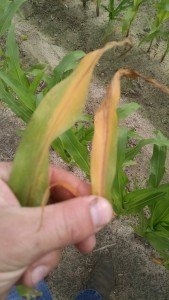The cultivation of corn, associated with beans and pumpkins
Greetings to my fellow farmers in the community of Steemit, today's topic is: The cultivation of corn, associated with beans and squash.
Corn is one of the cereals that together with wheat, is considered the most important food for humans. With corn you can obtain a large number of preparations such as: flours, oils, starches, starch, sweets, sweeteners, as well as, it is processed for the production of bioethanol. Corn contains a high nutritional value, and its consumption provides the body with many vitamins, carbohydrates, calcium, phosphorus and potassium. It is also widely used as food for animals including its grains stems and leaves.

Source
Corn cultivation associated with beans and squash
It is important to combine the cultivation of corn with other plants such as squash and beans, when these three crops are planted together in the same plot, an exchange of nutritional properties between them will be generated. It is very common to find the corn associated with the bean because it is a society that benefits each other, since the fickle bean finds in the corn the best tutor for its optimal growth, because the bean is rolled in its stem and this in turn It contributes to the corn, the required nitrogen, since they are nitrogen-fixing plants that take it from the atmosphere and make it available to the plants through the soil.

Source
Therefore, beans and corn are considered compatible plants, which benefit each other during their growth. Very often we find corn and bean crops, combined with pumpkin, which also helps to control weeds, since it is a climber and climber able to cover the soil to prevent weeds from being born.
How to plant corn?
The corn is propagated through the seeds, which are obtained from the panicle that comes to be the fruit, the grains are white, yellow and purple. When we are going to sow the seeds, they must be dry; Many farmers keep the seeds of their crops, to be used the following year, but to keep them it is necessary to protect them with insecticides or repellent powders, against the weevils, which are usually the ones that attack these grains.
Steps for planting corn by hand
Land preparation: this consists of plowing the land with the use of agricultural tractor and harrow.
Once plowed the land, it proceeds to form the irrigation furrows with the use of the agricultural tractor and the furrower equipment; the furrows are made in parallel forms with a separation distance of 1.20 m between furrows.

Source
- Proceed to make a water pass through the furrows.
Manual sowing: This work is carried out when few areas of land are to be planted.
Open the holes with the use of rods, the depth of the holes is 3 centimeters. These should have a separation of 0.70 centimeters between them. The holes must be made at the level of the irrigation water mark.
Place two to three seeds per stroke and cover.
After sowing the seed, water the next day and continue with light interdiaries, the important thing is to keep the humidity in the soil.
The seed will germinate between 8 and 10 days.
Mechanized sowing: This is done with the use of seeders coupled to the agricultural tractor, this type of sowing is carried out when dealing with large tracts of land. (10 hectares and up).
Once the land has been prepared, we proceed to plant with the mechanical seeders, this has a bar where the grains are placed, these seeders are placing the grains in the earth at a separation of 30 centimeters. Generally, when dealing with large areas, irrigation is carried out with pivots, or at the expense of the rains.
Corn crop fertilization program
The efficient management of nutrition in the cultivation of corn is one of the essential factors to obtain good yields, that is why we must design a good fertilization plan taking into account the different stages of crop growth.
Nutritional requirements of the corn crop:
Ammonium sulfate: Ammonium sulfate is incorporated into the soil at the time of preparation of the soil, at a rate of 150 kg. per hectare.
Nitrogen: During the first 50 days, the corn requires around 20 to 25 kg / ha of nitrogen equivalent to 43% of its requirements, during these first stages, the leaves develop and the plant begins to form the ear and the future ears of corn.

Source
Phosphorus: During the first 50 days, corn absorbs about 30% of the requirements of (P). Phosphorus is an essential nutrient for the initial development of the plant, since it stimulates the development of the roots.
Potassium: Potassium is important for the plant in all stages of growth, potassium is essential for the proper functioning of the stomata of the leaf, in the production and translocation of sugars to the whole plant
especially the ears of corn in development. The highest potassium absorption is during the second period of
growth and from the formation of the fruit.
Identification of symptoms due to nutritional deficiencies in the corn plant(N-P-K)
Nitrogen deficiency:

Source
Phosphorus deficiency:

Source
Potassium deficiency:

Source
Pests that attack corn crops
The cultivation of corn, is very often attacked by many pests. Among the destructive insects are fruit worms and aphids.
Corn worm: Helicoverpa zea Boddie:

Source
The chincha:

Source
Cogollero Worm: (Spodoptera frugiperda)

Source
Your post is awesome, protection is necessary for our farms,
Resteem your post,so that everyone can see and get aware.